I love 35mm film photography, I really do. I love pretty much everything about it from shooting to developing, I don’t even hate scanning with my quite slow Plustek 8100. The slowness of the whole process gives me ample time to decide what I really think of a given image.
As much as I love 35mm, it’s been impossible for me to resist the draw of medium format, specifically 120 roll film, for basically one reason. The negatives, or even better, transparencies are unbelievably gorgeous! I think that when I did the math, 120 film came out to have about 600% more surface area than 35mm film, even though I might have the number wrong, it can’t be denied that 120 negatives and transparencies are humongous, humongously beautiful to my eye.
Truth be told though, I don’t really need the added resolution that 120 format brings. When I print out work, I print small, and most scans are published on the net at reduced size anyway. Still there’s something to even a mediocre scan of 120 that has a certain something I rarely see in 35mm.
I have been shooting my excellent Reality So Subtle 6x6F pinhole camera for a few months now, but the longing for a lensed camera in 120 format wouldn’t go away. In researching the myriad possibilities available in medium format cameras I stumbled upon an interesting line of 3-D printed cameras, the particular camera that caught my eye would take Mamiya Universal Press lenses, which I had heard good things about already. A little web researching seemed to indicate that some of the Mamiya Press lenses were exceptional, when I found out that Mamiya had manufactured a 50mm lens for that series, it was pretty much a done deal for me. I love wide angle lenses and the crop factor for a 6×9 at 50mm focal length works out to about the equivalent of a 21mm in 35mm format, perfect!
Unfortunately when that camera arrived, I was sorely disappointed. Literally nothing fit. Not the lens, the film back, the viewfinder I had acquired, nothing. I had to sand, chisel, modify every hardware interface of that body to get anything to fit at all. Even then, it was so poorly made that it just wasn’t fun for me to shoot. I gave it away after a couple days.
Not willing to give up on the shiny allure of those brilliant 120 negatives just yet, I decided to try a Mamiya Universal Press body that would accommodate the nice 50mm press lens I had acquired. I found one on eBay in seemingly good shape, the seller had a 30 day return policy and the price was right, so I went for it. I have to say the Universal Press is a very nice camera. It’s very well made, seemingly sturdy as a steam shovel and to my delight, everything fit precisely and worked right off the bat! There was just one, well two, drawbacks, the Universal Press is huge and heavy. I’m sure it weighs more than my old Prius did and is nearly as big.
So as nice a camera as the Mamiya is , it mostly just sat there because I usually didn’t feel like lugging such a gargantuan weight around, whether on foot or by bicycle. Hmmm.
I participate in Maureen Bonds’s Flickr group In the Frame, when discussing Worldwide Pinhole Photography Day, Maureen mentioned the Chroma Cube 35mm pinhole camera. A tiny little 35mm pinhole camera that shoots 24×24 frames. I was intrigued by the design and began to investigate other Chroma designs. It turned out that Steve made a wide range of seemingly sophisticated 3-D printed cameras. When I saw that he made a few designs that would accommodate my 50mm Mamiya lens, my interest was definitely piqued.
I discovered that Steve manufactures a very compact 3-D printed camera called the Six:9 that will accept a wide range of lenses, including the Mamiya press lenses and can shoot a variety of formats from 6×4.5 to 6×9. Very interesting, but I was extremely leery of going down the 3-D printed rabbit hole again and getting burned. I wrote to Steve and he assured me that everything on his camera would work as intended and I could return it, no questions asked if it didn’t meet my expectations. How could I resist? The price was reasonable as was the lead time (the camera arrived in about half the time that Steve had given). When my Six:9 arrived, it was everything I hoped for! Everything fit together precisely and surely, the camera seems very solidly and beautifully constructed. I have to say, with the Mamiya 50mm mounted, it’s a very handsome camera and feels great in the hand and it’s so light!
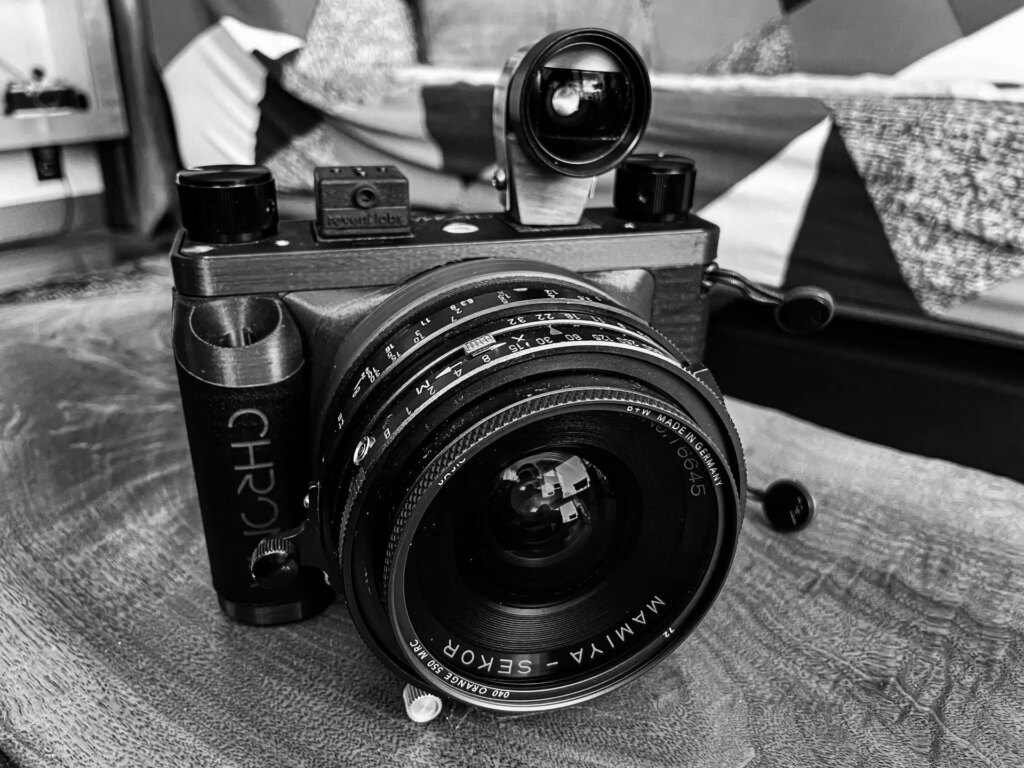
I only had one roll of 120 black and white film on hand, a roll of Ilford HP-5+, so I loaded up the Chroma with that and went out for a walking shoot. The Six:9 is a very fun camera to use! Nothing like the hulking behemoth that the Universal Press is. The Chroma feels great in the hand, it’s relatively nimble and is very comfortable to wear on a strap. The wind knob has detents so that it almost feels like there is a ratcheting mechanism inside, this gives a very sure and accurate feel when winding the film, something that would be welcome on my RSS pinhole camera. On the back, there are three clearly marked windows for the various frame sizes: 6×4.5, 6×6 and 6×9. I did need a little flashlight to see into the red frame counter window when winding, but the view of the numbers was clear and easy to read with the flashlight, again, a feature that would be welcome on my pinhole camera.
In the past I’ve had good luck developing Ilford HP-5+ in a seaweed developer made from a bladderwrack infusion. I still had a small bottle of infusion left in the fridge so I thought I would go with that.
This was my first time developing film in my new Dot-Line tank and I hadn’t read the capacities for it. As I was about to fill the tank with the 300ml of developer I had prepared, I realized that the Dot-Line used 590ml for a single 120 reel. Uh oh. Going with the flow, I just diluted the developer to 550ml (not enough it turns out) and decided to heat it above the recommended 82° F and develop a little longer than the 15 minutes that I’d used for HP-5 before. I wound up heating the solution to about 95° F and developing for 20 minutes with intermittent agitation.
As it turned out, the film was very overdeveloped and had a line in it where I hadn’t filled the tank with enough developer. Even though this roll is extremely flawed, I now have high hopes that I will be able to perfect my 120 process so that it’s as enjoyable as shooting 35mm. I also expect that the little Chroma camera will become one of my favorites. The struggle is real, but I think my medium format journey may be on an upward trend!
Thanks for reading this far! Below are the somewhat inglorious photos.
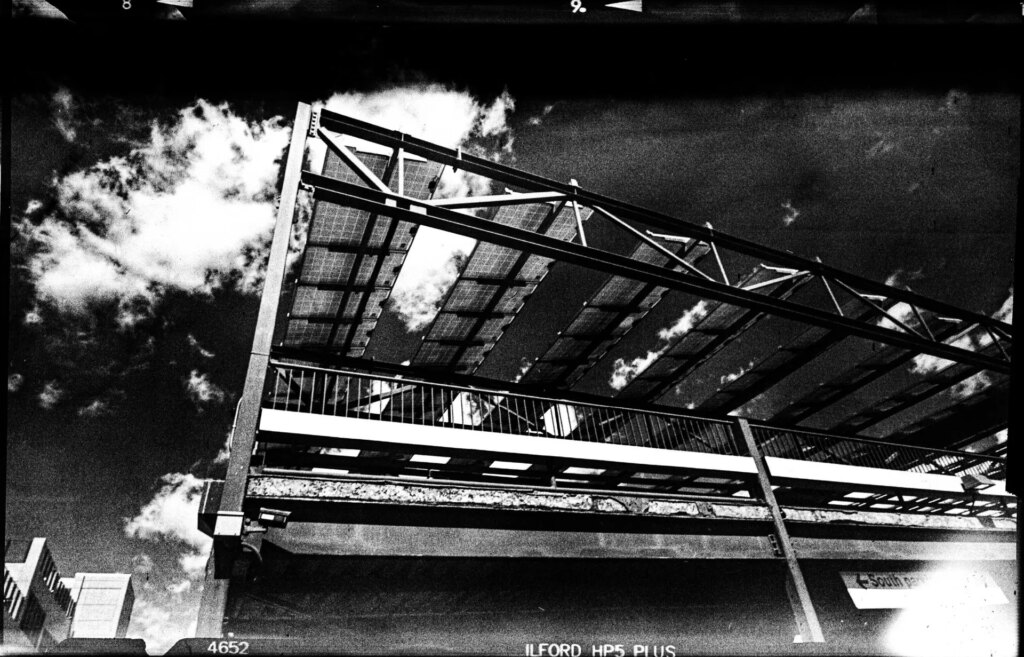
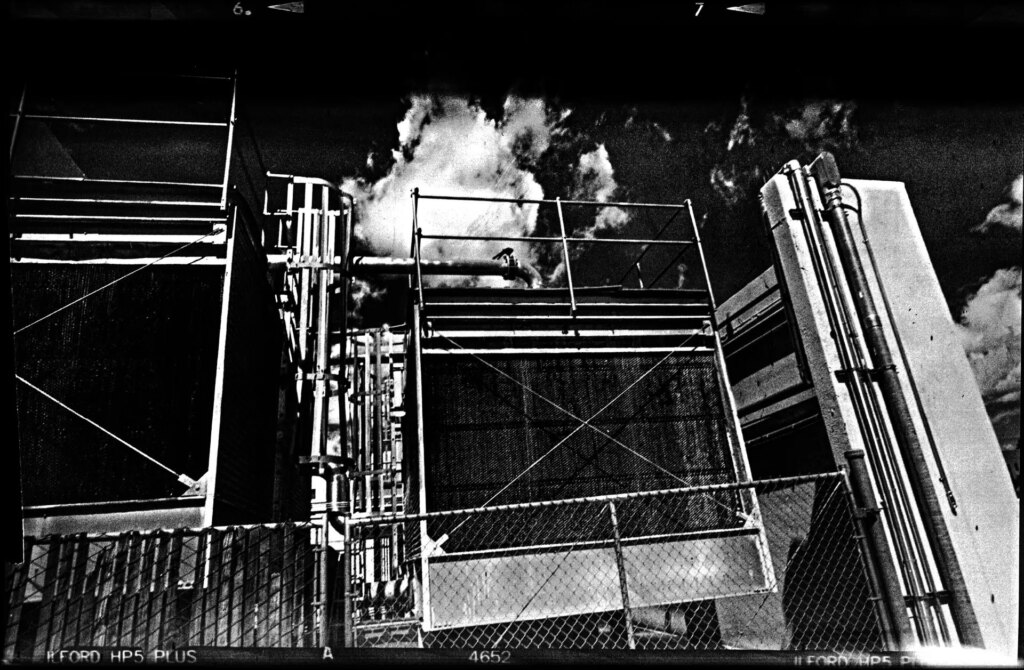
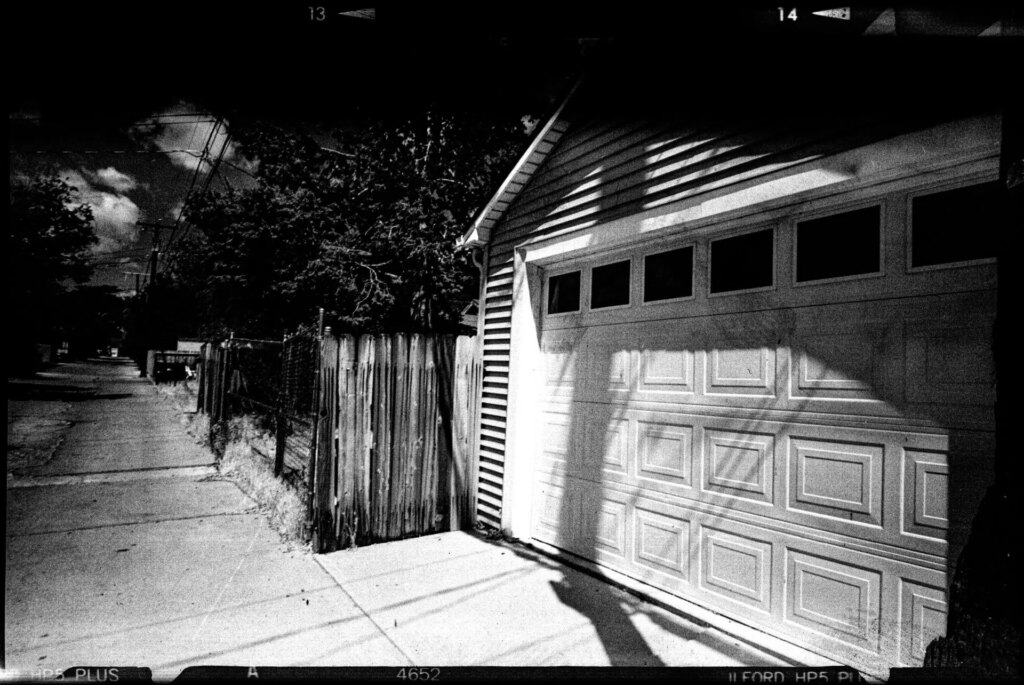
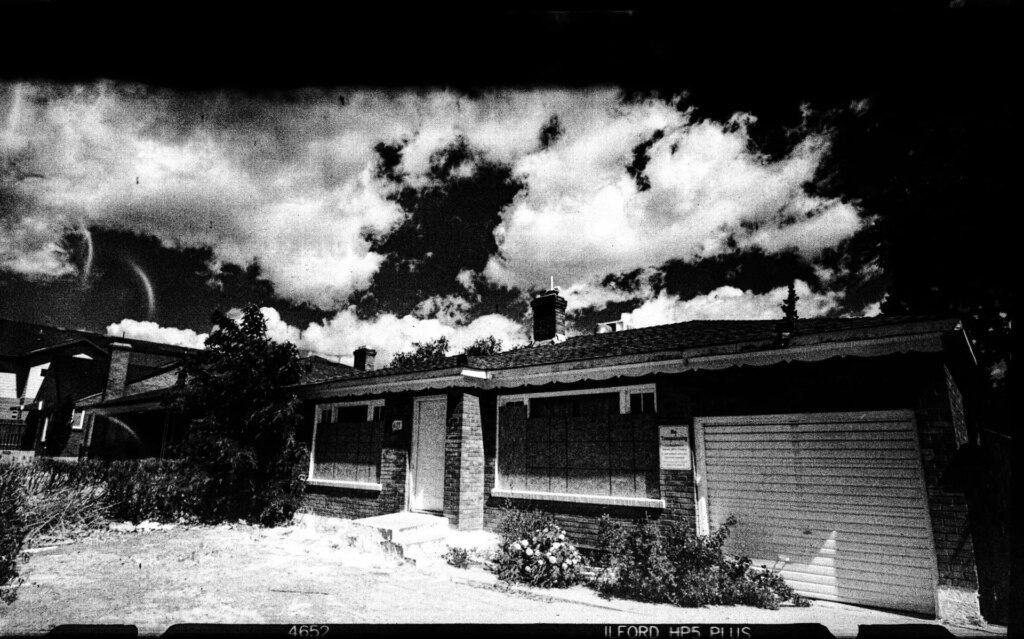
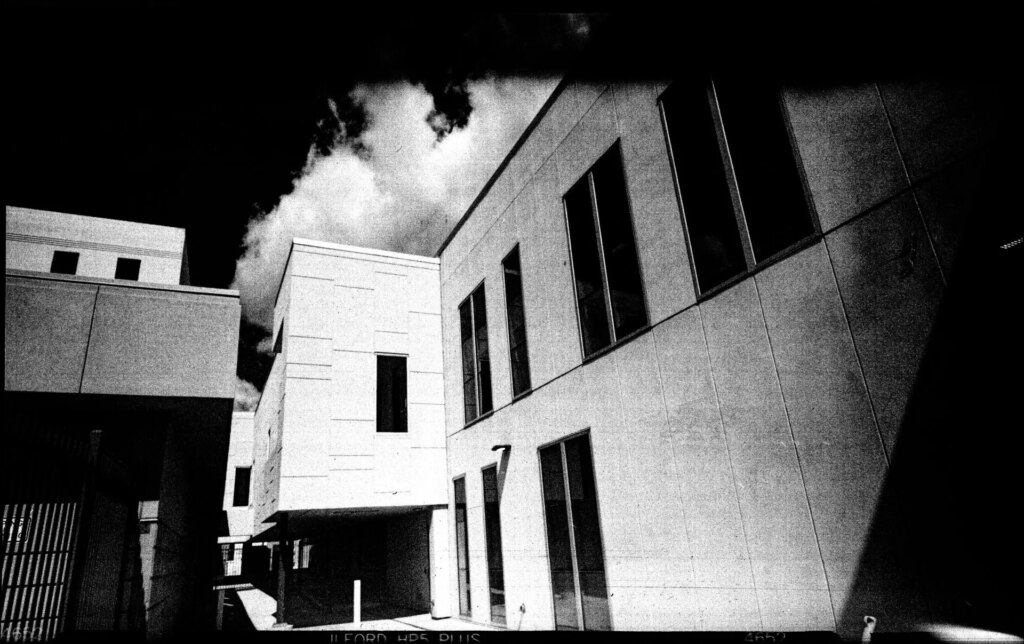
Check out my little blog The Daily Lumenbox.
Links: I should have put these in originally, but thanks to Rock’s interest I realized my error, here are a couple links to resources for those interested in seaweed and other similar developers. I hope to make some sagebrush developer soon:
A Bladderwrack recipe.
A whole host of plant based developer recipes.
Share this post:
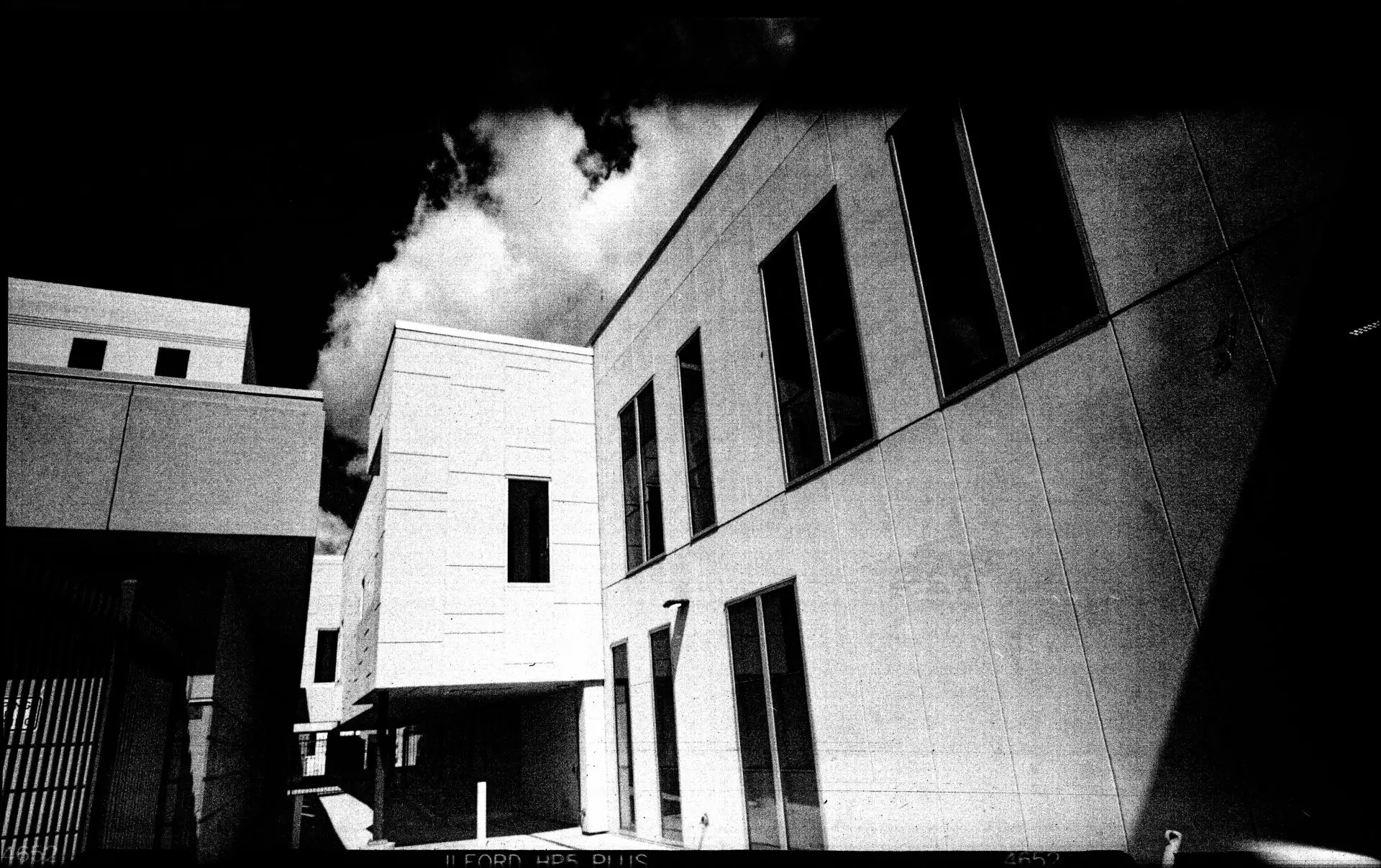








Comments
Sacha Cloutier on 5 Frames of HP-5 Overdeveloped in Seaweed – by Sonny Rosenberg
Comment posted: 28/06/2022
Comment posted: 28/06/2022
Rock on 5 Frames of HP-5 Overdeveloped in Seaweed – by Sonny Rosenberg
Comment posted: 29/06/2022
Comment posted: 29/06/2022
Peggy on 5 Frames of HP-5 Overdeveloped in Seaweed – by Sonny Rosenberg
Comment posted: 03/07/2022
Comment posted: 03/07/2022
Thomas Wolstenholme on 5 Frames of HP-5 Overdeveloped in Seaweed – by Sonny Rosenberg
Comment posted: 06/08/2022
Comment posted: 06/08/2022